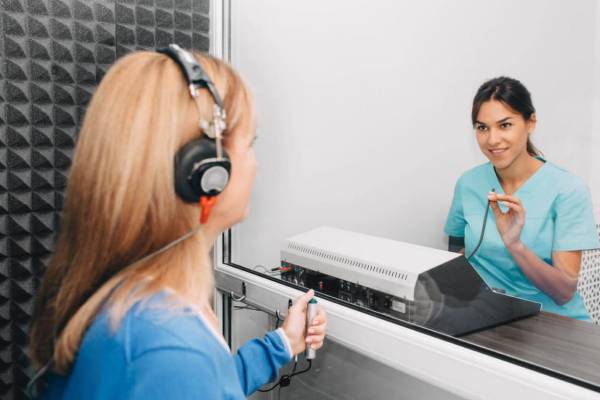An audiometry exam tests your ability to listen to sounds. Sounds vary, supported their loudness (intensity) and therefore the speed of acoustic wave vibrations (tone). Hearing occurs when sound waves stimulate the nerves of the internal ear. The sound then travels along nerve pathways to the brain. Sound waves can visit the internal ear through the auditory meatus , eardrum, and bones of the center ear (air conduction). they will also undergo the bones around and behind the ear (bone conduction).
The INTENSITY of sound is measured in decibels (dB):
- A whisper is about 20 dB.
- Loud music (some concerts) is around 80 to 120 dB.
- A reaction-propulsion engine is about 140 to 180 dB.
- Sounds greater than 85 dB can cause deafness after a couple of hours. Louder sounds can cause immediate pain, and deafness can develop during a very short time.

A formal hearing testing can provides a more exact measure of hearing. Several tests could also be done:
- Pure tone testing (audiogram): For this test, you wear earphones attached to the audiometer. Pure tones of a selected frequency and volume are delivered to at least one ear at a time. you’re asked to signal once you hear a sound. The minimum volume required to listen to each tone is graphed. a tool called a bone oscillator is placed against the mastoid to check bone conduction.
- Speech audiometry: This tests your ability to detect and repeat spoken words at different volumes heard through a headset.
- Immittance audiometry: This test measures the function of the eardrum and therefore the flow of sound through the center ear. a search is inserted into the ear and air is pumped through it to vary the pressure within the ear as tones are produced. A microphone monitors how well sound is conducted within the ear under different pressures.

